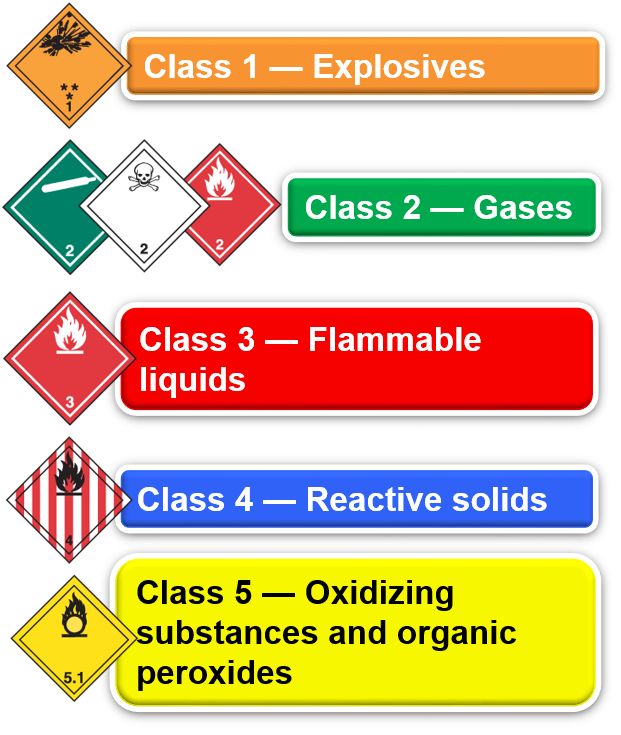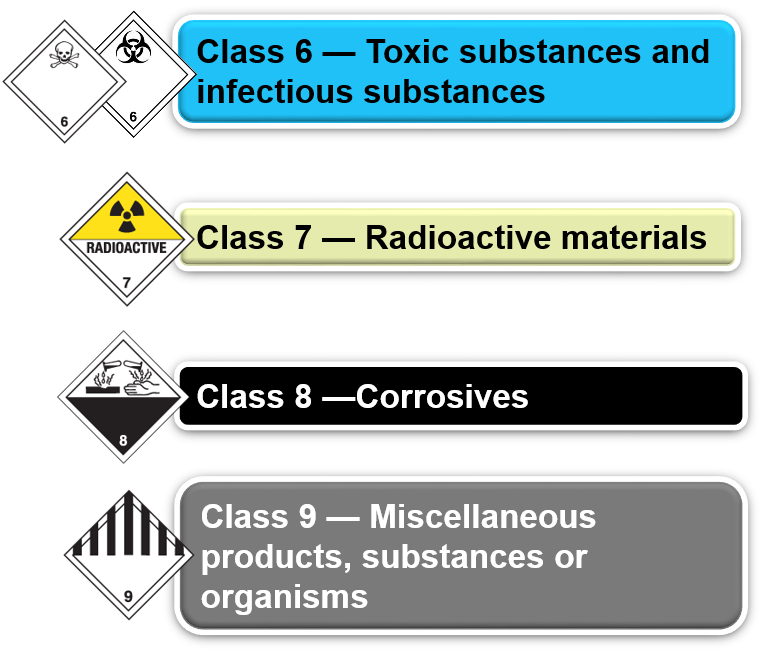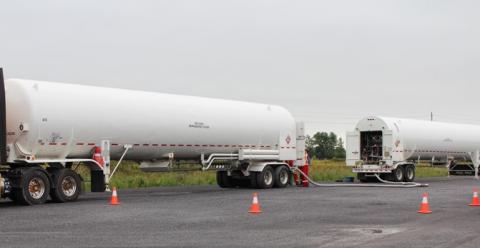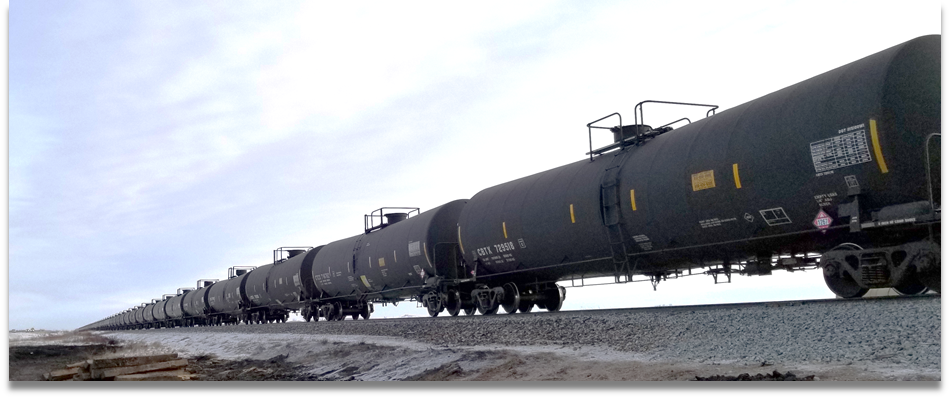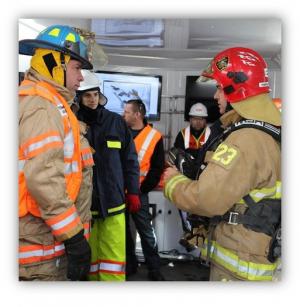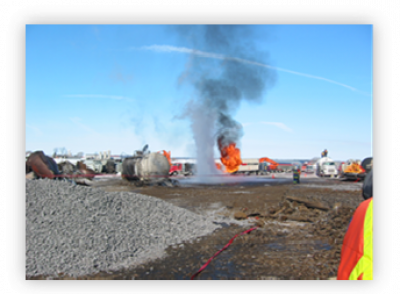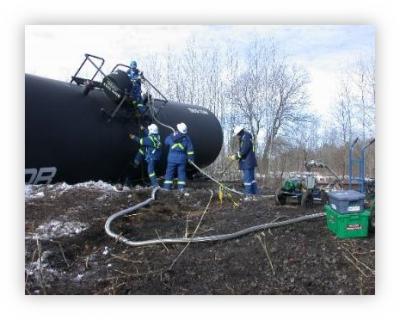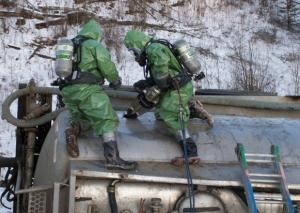On this page
- Transport Canada (TC) and the Transportation of Dangerous Goods (TDG) Directorate
- Recognize dangerous goods
- What is an Emergency Response Assistance Plan (ERAP)?
- Who requires an ERAP?
- Purpose of an ERAP
- Components of an ERAP
- When are ERAPs implemented?
- What is the ERAP telephone number?
- Who can implement an ERAP?
- What are TC’s roles and resources?
- Where to find more information
- Contacts
Transport Canada (TC) and the Transportation of Dangerous Goods (TDG) Directorate
- The TDG Directorate develops and implements the national program to promote public safety during the transportation of dangerous goods
- Dangerous goods are products, substances or organisms that can harm people, other living organisms, property or the environment if released in the course of transportation. They can be solids, liquids or gases.
- Dangerous goods are regulated for transport and are transported in means of containment that are required and permitted under the TDG Regulations
- https://laws-lois.justice.gc.ca/eng/regulations/sor-2001-286/
Recognize dangerous goods
Dangerous goods are sorted into nine (9) Classes and are transported with labels or placards indicating their class.
Image description: Recognize dangerous goods
| Class | Label |
|---|---|
| Class 1 | Explosives |
| Class 2 | Gases |
| Class 3 | Flammable liquids |
| Class 4 | Reactive solids |
| Class 5 | Oxidizing substances and organic peroxides |
| Class 6 | Toxic substances and infectious substances |
| Class 7 | Radioactive materials |
| Class 8 | Corrosives |
| Class 9 | Miscellaneous products, substances or organisms |
For more information, please visit The Marks of Safety.
What is an ERAP?
- For the transportation of certain higher-risk dangerous goods, the Transportation of Dangerous Goods Act, 1992 (TDG Act) requires an ERAP to be in place
- An ERAP describes what to do in the case of a release or anticipated release of certain higher-risk dangerous goods while they are in transport
- ERAPs list specialized personnel and equipment needed for responding to an incident, as well as give examples of response actions these resources will be used for
Who requires an ERAP?
- Persons who have ERAPs are involved in the transportation (shipping, receiving or transporting) of certain dangerous goods above the quantity specified in the TDG Regulations
- They are often producers, manufacturers or distributors of dangerous goods
Purpose of an ERAP
- A person with an approved ERAP uses the plan to assist emergency responders
- ERAPs may be used along with emergency response plans from other organizations (for example, carriers and local or provincial authorities)
- An incident management system ensures coordination between the ERAP and other emergency response plans, in order to:
- ensure public safety
- ensure that specialized assistance is available to local responders
- minimize consequences
Components of an ERAP
- ERAPs are approved by TC following the conditions indicated in Part 7 of the TDG Regulations
- Each plan is specific to certain:
- dangerous goods
- modes of transport (air, rail, road, marine)
- means of containment (containers or packaging)
- geographical area in which the dangerous goods will be transported
- Only certain dangerous goods in specified quantities, means of containment or modes of transport need an ERAP
When are ERAPs implemented?
- ERAPs are implemented to respond to a release or anticipated release of the dangerous goods that are part of the plan
- Often, the person who has the ERAP is contacted through the ERAP telephone number. Once reached, this person determines the actions they will take to respond to the release or anticipated release.
What is the ERAP telephone number?
- Every ERAP must have an ERAP telephone number
- When a consignment requires an ERAP, this number is found on the shipping document
- Persons calling the ERAP telephone number will be connected with someone who can implement the plan. That person will:
- provide technical and/or emergency response advice promptly
- monitor the response
- send ERAP emergency response resources, if required
Who can implement an ERAP?
- Anyone can call the ERAP telephone number for assistance during an incident involving DG
- Only the persons who have the ERAP are responsible for implementing it. Any other person or organization cannot implement an ERAP.
- When necessary to protect public safety, section 7.1 of the TDG Act allows TC to:
- direct a person with an approved ERAP to implement their plan in order to respond to a release or anticipated release
- authorize a person with an approved ERAP to implement their plan, if it is unclear who is required to have an ERAP for the dangerous goods involved in an incident
What are TC’s roles and resources?
For any emergency involving dangerous goods:
- Contact CANUTEC, the Canadian Transport Emergency Centre
- The Emergency Response Advisors can provide technical advice on dangerous goods over the phone, 24 hours a day, 7 days a week
When dangerous goods that have an ERAP are involved:
- Remedial Measures Specialists (RMS) are designated TDG Inspectors under the TDG Act that can provide advice remotely or on site
- On site of an incident, they can make recommendations to the Incident Commander, and direct or stop actions, if required, to protect public safety and personnel on site
Where to find more information
On ERAPs:
On CANUTEC:
On the TDG Directorate:
If you wish to have an awareness session on these topics, contact the TDG Safety Awareness Team:
Contacts
For regulatory questions, contact the TDG regional office in your region:
Atlantic
1-866-814-1477
TDG-TMDAtlantic@tc.gc.ca
Prairie & Northern
1-888-463-0521
pnrtdg-tmdrpn@tc.gc.ca
Quebec
1-514-633-3400
TMD-TDG.Quebec@tc.gc.ca
Pacific
1-604-666-2955
TDGPacific-TMDPacifique@tc.gc.ca
Ontario
1-416-973-1868
TDG-TMDOntario@tc.gc.ca
National Capital Region
tdg-tmd@tc.gc.ca
TDG Directorate Contacts
General TDG information: TDG-TMD@tc.gc.ca
Safety Awareness Team:
TC.TDGSafetyAwareness-SensibilisationalasecuriteduTMD.TC@tc.gc.ca
Response Operations Team (ERAP Program):
TC.ChiefResponseOperations-ChefOperationsDeReponse.TC@tc.gc.ca
For emergencies (24 hours a day, 7 days a week) dial:
- 1 888 CANUTEC
- (613) 996-6666
- *666 on a mobile phone (in Canada only)
TDG Website:
https://tc.canada.ca/en/dangerous-goods/transportation-dangerous-goods-canada
![]()
Emergency Response Assistance Plan (ERAP)
(PDF, 703 KB)
